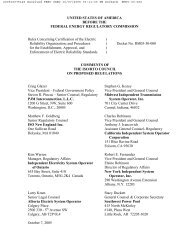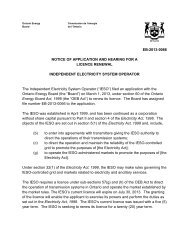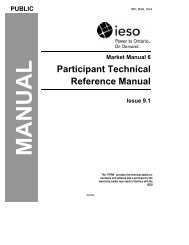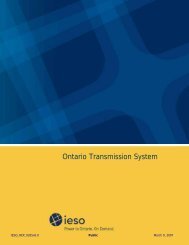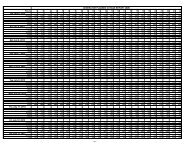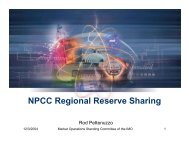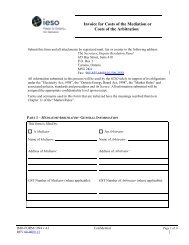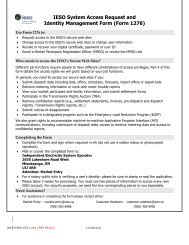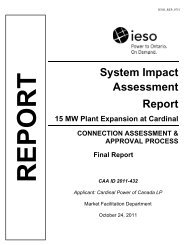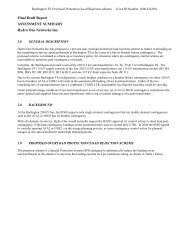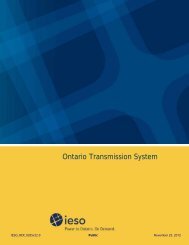IESO 2009 Annual Report - Independent Electricity System Operator
IESO 2009 Annual Report - Independent Electricity System Operator
IESO 2009 Annual Report - Independent Electricity System Operator
Create successful ePaper yourself
Turn your PDF publications into a flip-book with our unique Google optimized e-Paper software.
ieso <strong>2009</strong> ANNUAL REPORT<br />
The estimated service lives in years, from the date the assets were acquired, are:<br />
Class<br />
Estimated Average Service Life<br />
Facilities 38<br />
Meter Data Management/Repository 6<br />
Market <strong>System</strong>s and Applications 5 to 9<br />
Infrastructure and Other Assets 4 to 7<br />
Intangible Assets 4<br />
Gains and losses on sales of property and equipment are charged to operations. Losses on premature<br />
retirements for property and equipment and intangible assets are charged to operations.<br />
The estimated service lives of property and equipment and intangible assets are subject to periodic<br />
review. The impacts of changes in the estimated lives are amortized on a prospective basis. The most<br />
recent review was completed in fiscal <strong>2009</strong>.<br />
g) Intangible assets<br />
Intangible assets are capitalized at cost, which comprises materials, labour, external support, overhead,<br />
and interest applicable to capital activities.<br />
h) Pension and other post-employment benefits<br />
The <strong>IESO</strong>’s post-employment benefit programs include pension, group life insurance, health care, longterm<br />
disability and workers compensation benefits.<br />
The <strong>IESO</strong> accrues obligations under pension and other post-employment benefit (OPEB) plans and the<br />
related costs, net of plan assets. Pension and OPEB expenses and obligations are determined annually by<br />
independent actuaries using the projected benefit method and management’s best estimate of expected<br />
return on plan assets, salary escalation, retirement ages of employees, mortality and expected health-care<br />
costs. The discount rate used to value liabilities is based on market rates as at the measurement date of<br />
September 30.<br />
The expected return on plan assets is based on management’s long-term best estimate using a marketrelated<br />
value of plan assets. The market-related value of plan assets is determined using market-related<br />
values for equities (whereby fund assets are calculated using the smoothed value of assets over five years)<br />
and market values for fixed income securities, as at the measurement date of September 30.<br />
Pension and OPEB expenses are recorded during the year in which employees render services. Pension<br />
and OPEB expenses consist of current service costs, interest expense on liabilities, expected return on<br />
plan assets and the amortization of plan amendments on a straight-line basis over the expected average<br />
remaining service life of the employees covered by the plan. Actuarial gains/(losses) arise from, among<br />
other things, the difference between the actual rate of return on plan assets for a period and the expected<br />
long-term rate of return on plan assets for that period or from changes in actuarial assumptions used to<br />
determine the accrued benefit obligations. The excess, if any, of the cumulative unamortized net actuarial<br />
gain or loss over 10% of the greater of the projected benefit obligation and the market-related value of<br />
plan assets is also amortized over the expected average remaining service life of the employees covered<br />
by the plan.<br />
13





